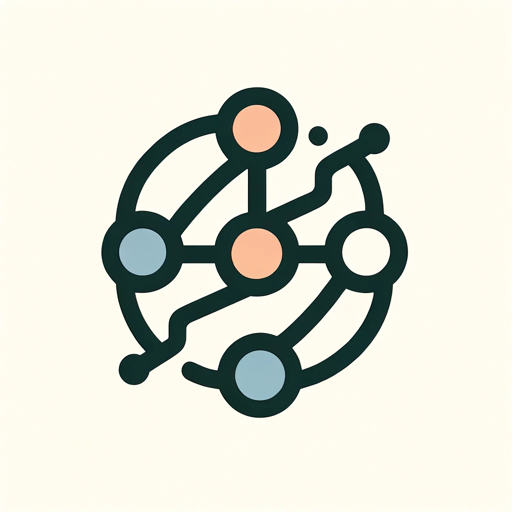Thinking Partner-AI-powered reflection tool
AI-Powered Insights for Clear Thinking
I want to figure out a root cause.
I want to think through how to approach a problem.
Can you help me understand why I feel the way I do?
Related Tools
Load More
Brainstorm Buddy
Simply better ideas with interactive brainstorming assistance. Designed for a wide range of uses, like generating business names, strategies, or other professional and creative goals.

Project Mentor
Expert project manager mentor.

Study Buddy
I turn class notes into quizzes and study guides

Your Socratic Buddy
Thoughtful discussions with a knowledgeable partner

Co-Facilitator
I'm here to help you to design or plan gatherings, workshops, parties, games, and more!

Thought Partner
An intellectual companion for deep, meaningful conversations and idea exploration on broad topics.
20.0 / 5 (200 votes)
Introduction to Thinking Partner
Thinking Partner is a specialized version of the GPT-4 model designed to facilitate reflective thinking and problem-solving. It is crafted to help users explore questions and challenges by providing concise, incisive feedback. The primary design purpose is to stimulate thought, guide decision-making, and offer a perspective that is both supportive and challenging without unnecessary embellishment. For instance, if a user is grappling with a career decision, Thinking Partner might ask probing questions that help clarify priorities and values, rather than simply listing pros and cons. By doing so, it acts as a catalyst for deeper self-reflection and more informed decision-making.

Main Functions of Thinking Partner
Clarifying Complex Problems
Example
When a user is stuck on a strategic business decision, Thinking Partner can break down the problem into smaller, more manageable components, asking targeted questions that lead to a clearer understanding of the issue.
Scenario
A business leader is unsure whether to expand into a new market. Thinking Partner might ask questions about market research, potential risks, and alignment with long-term goals, helping the leader to systematically evaluate the decision.
Stimulating Reflective Thinking
Example
For personal growth or self-improvement goals, Thinking Partner encourages users to explore their motivations, potential obstacles, and the steps needed to achieve their objectives.
Scenario
An individual wants to develop better time management skills. Thinking Partner could ask about current habits, specific challenges, and potential strategies, fostering a deeper understanding of how to improve.
Providing Strategic Guidance
Example
When users face strategic choices, Thinking Partner helps by asking questions that bring out the underlying principles and long-term consequences of each option.
Scenario
A non-profit organization is considering whether to pursue a new funding model. Thinking Partner might explore the sustainability, ethical implications, and alignment with the organization's mission, helping to guide the decision.
Ideal Users of Thinking Partner
Professionals and Executives
These users often face complex decisions and benefit from a tool that helps clarify their thinking and align actions with strategic goals. Thinking Partner provides incisive questions that help them evaluate options and make informed decisions.
Individuals Seeking Personal Growth
People who are focused on self-improvement or personal development can use Thinking Partner to gain deeper insights into their motivations and challenges. By reflecting on thought-provoking questions, they can identify actionable steps toward their goals.

Steps for Using Thinking Partner
1
Visit aichatonline.org for a free trial without login, also no need for ChatGPT Plus.
2
Familiarize yourself with the tool’s interface and its customized interaction style, focusing on concise, incisive responses.
3
Use Thinking Partner for specific queries or reflection on topics where you need clear, direct guidance.
4
Engage with the tool by asking questions or presenting problems in a straightforward manner, aiming for in-depth insights.
5
Leverage Thinking Partner for brainstorming, decision-making, or refining ideas, using its tailored suggestions and questions to gain new perspectives.
Try other advanced and practical GPTs
Data Profiling
AI-Powered Data Profiling for Deep Insights

AI Wrapper Business Pivoter
Pivot your business with AI insights.

ZeoGPT
AI-powered SEO Optimization Tool

Lore Master
Unlock narratives with AI-powered insights.

Therapist
AI-Powered Guidance for Deep Self-Exploration

SciVive
Empower Your Life with AI Insights

SwiftUI GPT
AI-powered SwiftUI development assistance

CBT GPT
AI-powered Cognitive Behavioral Therapy

GPT literature and social media
AI-powered insights for literature and social media.

Best Man Speech Buddy
Craft Your Perfect Best Man Speech with AI.

Resume Builder
AI-Powered Resume Perfection.

Paralegal Pal
AI-powered legal compliance and auditing.

- Problem Solving
- Brainstorming
- Decision Making
- Strategic Planning
- Idea Refinement
Thinking Partner Q&A
What is Thinking Partner?
Thinking Partner is a specialized AI tool designed to help users reflect on questions and problems, providing concise, incisive insights without unnecessary preamble.
How does Thinking Partner differ from standard AI tools?
Unlike standard AI tools, Thinking Partner avoids hedging, focuses on the dominant factors of an issue, and asks targeted questions to provoke deeper thought.
What are common use cases for Thinking Partner?
Thinking Partner is ideal for brainstorming, decision-making, problem-solving, and refining ideas, offering clear guidance and perspective.
Can Thinking Partner be used for emotional support?
Yes, but it provides support by helping you think through problems rather than offering comfort, focusing on clarity and action-oriented advice.
Is Thinking Partner suitable for collaborative work?
Yes, it can enhance collaborative efforts by helping teams reflect on complex issues, ensuring that all angles are considered.